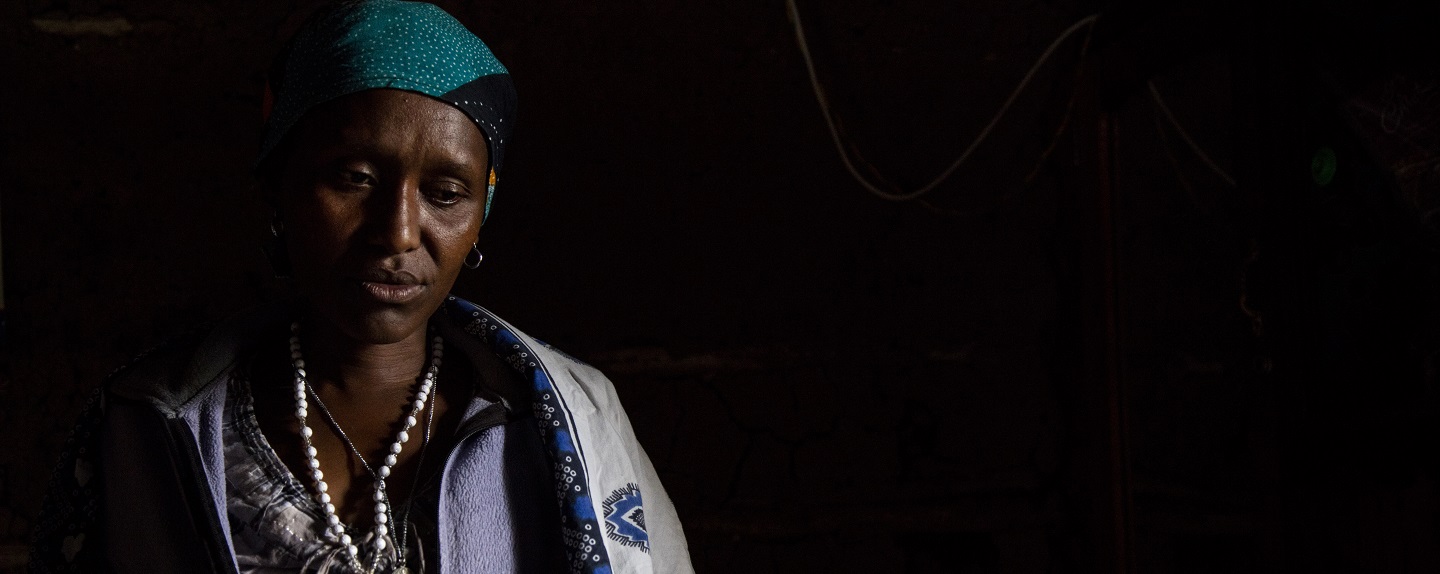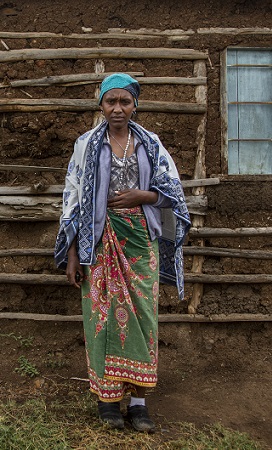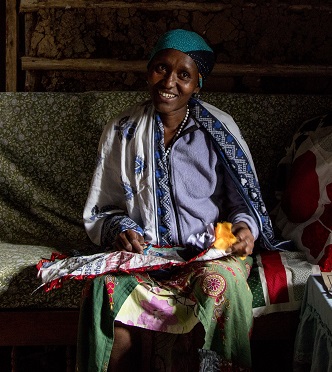
‘I want to be a real entrepreneur’: Anita
Take the road out of Arusha in the foothills of Mount Neru. Head south to Olkeriani and keep going until you hit the edge of town. Keep moving past the end of the tarmac, past the last of the cinderblock homes, and arrive at a building made from sticks and plastered with mud. Look for the woman with a lifetime in her eyes.
Anita Msele has been up since 5am, when she rose to make maize and chai tea for her sons. Aged 41, and with a full day’s labour ahead of her, she passed on the maize. “I think of the boys and I can’t eat,” she says. “I can’t let them go to school hungry.” It’s nearly midday.
Outside under a soil-thumping sun, young patches of maize, spinach and sugarcane struggle towards harvest, still months away. Inside, Anita’s young tailoring business also struggles to get off the ground. It was the same story last year when she tried selling socks at the market, and the year before that selling shoes, second-hand, door-to-door.
Anita feeds you tea with sugar, and when you ask her what worries her, leads you outside and pokes at her home’s foundations. A small piece comes crumbling to the ground. The home was built in 2005, she says, the same year her husband died. “At night in the wind and the rain the roof leaks and the house moves. We can’t sleep – it could fall down at any moment.”
Olkeriani, Tanzania
Gathering shadows

Anita outside the family home.
Anita is not hungry by choice. She is trying her hardest – and doing an incredible job – in a world that treats her as surplus and a climate that’s hostile to her survival. Like every one of us, she needs help.
Nine percent of households in and around Olkeriani earn their income solely from business – owning a shop, for example, or transporting people or goods on boda bodas (motorcycle taxis). Fifteen percent earn some of their income from business. The rest, 76 percent, rely entirely on farming to see them through, many at the subsistence level. And time’s not on their side.
Rainy and dry seasons cause boom-and-bust crop cycles: little followed by less followed by none. As the climate worsens, those cycles are becoming harder to predict and almost impossible to manage. For the 55 percent of Anita’s neighbours who live below the poverty line, the need to adopt climate-resilient farming practices and diversify sources of income is dire – and exactly where Hand in Hand aims to help.
A path to success

Anita sewing at home.
When Anita joined her Self-Help Group three months ago it wasn’t the lure of income that sold her but the promise of companionship. Still, as the training the progressed, she began to feel a glimmer of (was it?) hope.
“The training’s been mind-opening. I understand now about buying and selling. I understand about saving some of the money I earn,” says Anita.
“I want to get out of this situation where I have to beg for everything. I want the children to go to school so that they can achieve their goals. I want to be a real entrepreneur. So I will stick with Hand in Hand.”
With the dry season looming, she still has a long way to go. But for the first time in a long time – down the road from Arusha, at the edge of Olkeriani, past the end of the tarmac, near the cinderblock homes – the distance doesn’t seem too far.
By the numbers
Rural adult population living in poverty in Hand in Hand’s target areas: 293,110
Number of jobs we aim to create: 200,000
Percentage of target rural poor with improved incomes: 68 percent
Next case study: Meet Gloria, the former refugee growing crops – and profits
